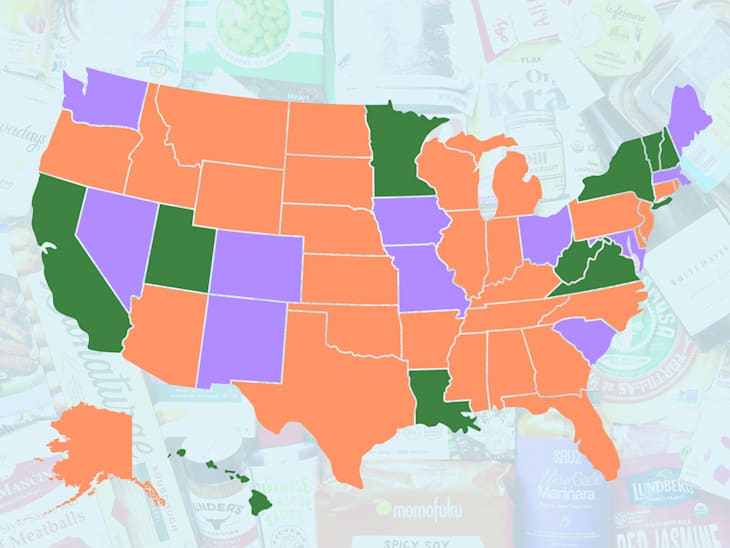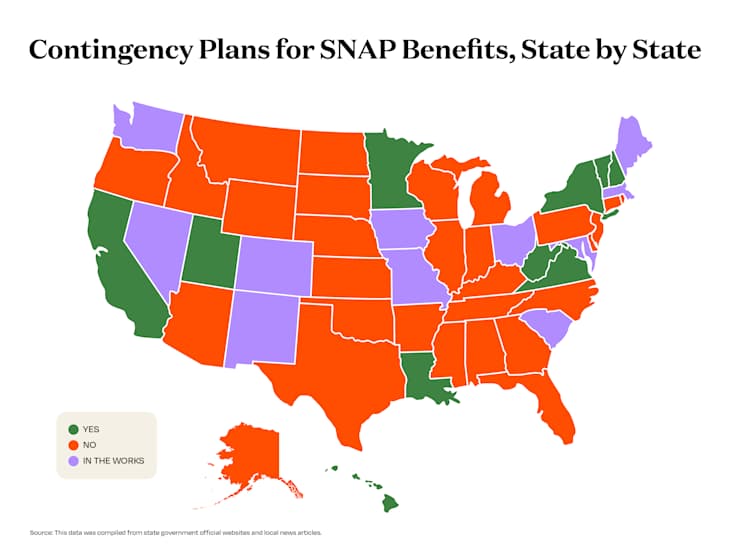

Grocery prices have been on the rise for a while now, and many shoppers are searching for discounts to further stretch their dollar. That pressure is only magnified for those that receive benefits from the Supplemental Nutrition Assistance Program (SNAP) — over 41 million people (or 12.3% of the U.S. population).
SNAP is funded by the federal government and helps low-income Americans buy groceries. To receive the benefits, you must meet certain requirements (which recently, under the One Big Beautiful Bill Act of 2025, have become stricter). Once approved, you receive an electronic benefit transfer (EBT) card with your specific monthly allotment to spend on groceries of your choice at participating locations.
However, SNAP benefits are currently expected to be halted come November 1. This means that millions of Americans’ EBT cards will not be refilled. (Some states have allowed recipients to continue using the remaining balance — more on that below.) While SNAP is federally funded, implementation is executed by the states themselves. On October 10, the U.S. Department of Agriculture (USDA) sent a letter to state agencies informing them of insufficient funds to continue the SNAP program and ordered them to stop distributing SNAP benefits come November “until further notice.” A message on the USDA website reads, “Bottom line, the well has run dry.”
What Does This Mean for SNAP Recipients?
SNAP recipients will now have to find alternate means of getting food, which will likely mean relying on nonprofit organizations, food banks, even family and friends for help — right in the lead up to the holiday season. The nonprofit organizations many depend on are also feeling the impact and are gearing up for this critical moment, already impounded by current high rates of food insecurity.
Staff at West Side Campaign Against Hunger (WSCAH), a food pantry in New York City’s Upper West Side neighborhood, know this all too well and are witnessing the impact of the looming SNAP cuts firsthand. Delilah Guzman, a senior benefits access specialist at WSCAH, told me, “The other day I was working with a mother who uses SNAP benefits to buy formula for her infant. With the upcoming cuts and the shutdown, she’ll have to choose between paying bills and providing formula and food for her children.” Delilah also works with an older adult battling stage four breast cancer. “SNAP benefits is how she is able to buy the nourishing foods she needs. It helps sustain her treatment, because we know food is also medicine,” she says. This is the real impact, and that’s just a few people at one organization.
In the face of the looming SNAP cuts, WSCAH is also making changes to its model to provide extra support. They’re increasing the allotment of food they serve per family by 50% (“extra fruit and veg, an additional pound of protein, and more grains”) starting November 1. WSCAH’s CEO Chef Greg Silverman also traveled to Washington D.C. earlier this week advocating for SNAP. “Legally, the USDA has authority to release $5 billion to $6 billion in SNAP allocated contingency funds without even reopening the government. This is the simplest and fastest solution to support SNAP customers across the country. We need more collaboration to support communities in need, not less,” Greg says.
Next Steps
To fill the gaps for their constituents, state agencies and leaders are taking action to fulfill their communities’ needs in a variety of ways. As of October 28, 25 states have sued the USDA over its decision to suspend SNAP benefits, asking the USDA to use contingency funds to keep the program going, even in the face of the government shutdown. But at the time of reporting, so far, they haven’t budged, stating that those funds are allocated for natural disasters.
To provide support, DoorDash even launched its own emergency food response, pledging to deliver 1 million meals for free to food banks through its Project DASH program and waiving delivery and service fees for SNAP grocery orders. Some states have set up contingency plans or are currently working toward some sort of interim plan. This map details which states have some form of a contingency plan, which have talks of a contingency plan in the works, and which have none at all. Here’s what’s happening in each state.

How States Are Taking Action
As of the time of reporting, so far 10 states have implemented some form of a contingency plan: California, Hawaii, Louisiana, Minnesota, New Hampshire, New York, Utah, Vermont, Virginia, and West Virginia.
Other states have some contingency plans or the makings of ones in the works, but it’s unclear if they will actually come to fruition come November 1. Those include Colorado, Iowa, Maine, Maryland, Massachusetts, Missouri, Nevada, New Mexico, Ohio, South Carolina, and Washington.
Resources
The remaining states have not issued any contingency plans or emergency funds at the time of reporting. If you are in need of food, the resources below can help you find local food banks and other emergency food solutions. If you are not in need of food, you can support organizations such as WSCAH through donations.
- Visit Feeding America: Go to Feeding America’s website where you can enter your ZIP code to find a local food bank near you.
- Check your state’s website: Your government state website will have more specific details on resources in your area, including food banks, food pantries, and other emergency food solutions.
- Use DoorDash: As listed above, if you are a SNAP recipient, delivery and service fees will be waived on SNAP orders at participating locations (including Sprouts, Dollar General, Schnucks, Food Lion, Giant Foods, The GIANT Company, Hannaford, Stop & Shop, Hy-Vee, Giant Eagle, and Wegmans).